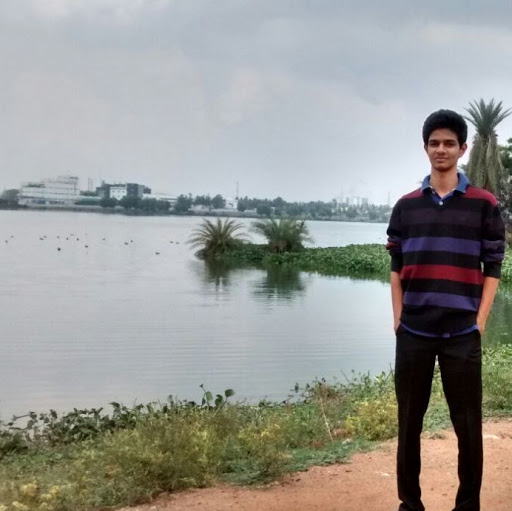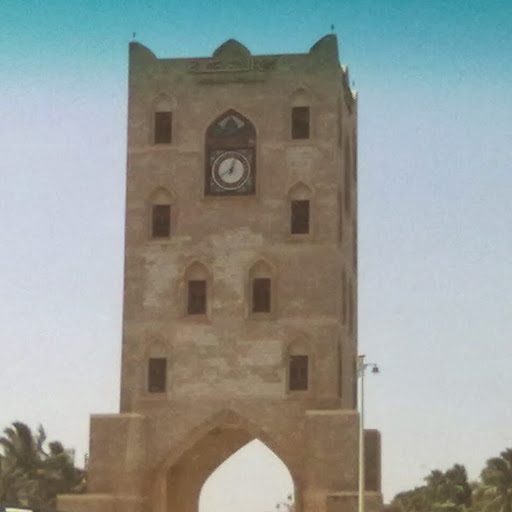Sriram Natarajan
age ~49
from Cupertino, CA
- Also known as:
-
- Srirem Natarajan
- Srira Natarajan
Sriram Natarajan Phones & Addresses
- Cupertino, CA
- Sunnyvale, CA
- 18930 Bothell Everett Hwy, Bothell, WA 98012 • 425 488-3014
- 20225 Bothell Everett Hwy, Bothell, WA 98012 • 425 488-3014
- Redmond, WA
- 4500 The Woods Dr, San Jose, CA 95136 • 408 629-5979
- Santa Clara, CA
- Bellevue, WA
License Records
Sriram Subramania Natarajan
License #:
21687 - Active
Issued Date:
May 24, 2002
Renew Date:
Dec 1, 2015
Expiration Date:
Nov 30, 2017
Type:
Certified Public Accountant
Resumes

Senior Researcher At Ntt Innovation Institute Inc
view sourcePosition:
Senior Researcher at NTT Innovation Institute Inc.
Location:
San Mateo, California
Industry:
Computer Networking
Work:
NTT Innovation Institute Inc. - San Mateo, California since Aug 2012
Senior Researcher
University of Massachusetts Amherst Aug 2009 - Jul 2012
Research Assistant
Deutsche Telekom Jun 2010 - Sep 2010
Research Intern
University of Massachusetts Amherst Sep 2007 - Aug 2009
Research Assistant
University of Massachusetts Amherst Sep 2007 - May 2008
Computing and Network Specialist
Senior Researcher
University of Massachusetts Amherst Aug 2009 - Jul 2012
Research Assistant
Deutsche Telekom Jun 2010 - Sep 2010
Research Intern
University of Massachusetts Amherst Sep 2007 - Aug 2009
Research Assistant
University of Massachusetts Amherst Sep 2007 - May 2008
Computing and Network Specialist
Education:
University of Massachusetts, Amherst 2008 - 2012
PhD, Computer Systems Engineering University of Massachusetts, Amherst 2006 - 2008
M.S, Computer Systems Engineering Anna University 2002 - 2006
B.E, Electronics and Communication Engineering
PhD, Computer Systems Engineering University of Massachusetts, Amherst 2006 - 2008
M.S, Computer Systems Engineering Anna University 2002 - 2006
B.E, Electronics and Communication Engineering
Interests:
Computer Networks, Software-defined Networking, Network Virtualization, Network Security, Cloud Computing, Distributed Systems
Awards:
Travel Grants
ANCS 2011, FOCI 2011, GENI Engineering Conference (GEC 2011), CoNEXT 2010
ANCS 2011, FOCI 2011, GENI Engineering Conference (GEC 2011), CoNEXT 2010

Sriram Natarajan
view sourceLocation:
United States
Us Patents
-
Optimal Bank Shapes For Inkjet Printing
view source -
US Patent:7132788, Nov 7, 2006
-
Filed:Sep 9, 2003
-
Appl. No.:10/658722
-
Inventors:Rahul Gupta - Santa Clara CA, US
Andrew Ingle - Fremont CA, US
Sriram Natarajan - Burlingame CA, US
Stefan Grebler - Sunnyvale CA, US -
Assignee:Osram Opto Semiconductors GmbH - Regensburg
-
International Classification:H05B 33/14
H05B 33/00
H05B 33/10
H01L 51/50
H01L 51/56 -
US Classification:313504, 313503, 313506, 313509, 445 24, 427 66
-
Abstract:The shapes of the photo-resist layer “banks” which define pockets for inkjet printing or other patterned processes are optimized to provide a more uniform drying profile for substances which are to be deposited in those pockets and dried therein. Preferably, the shapes of the banks are “mushroom” shaped such that a portion of the photo-resist layer overhangs the exposed lower electrode layer.
-
Apparatus And Method For Distance Extension Of Fibre-Channel Over Transport
view source -
US Patent:7145877, Dec 5, 2006
-
Filed:Mar 31, 2003
-
Appl. No.:10/403396
-
Inventors:Sriram Natarajan - Sunnyvale CA, US
Sharat Prasad - San Jose CA, US
Yu Deng - Milpitas CA, US
Yanfeng Wang - Fremont CA, US -
Assignee:Cisco Technology, Inc. - San Jose CA
-
International Classification:H04L 12/26
-
US Classification:370235, 370252
-
Abstract:The Fibre-Channel flow control mechanism is augmented to facilitate efficient data exchange between Fibre-Channel ports over extended distances. A supplemental buffer mechanism may be maintained as part of an interface to a transport network used to carry Fibre-Channel traffic. The transport network interface makes a remote Fibre-Channel port aware of the augmented local receiver buffer capacity by intercepting certain frames used in link establishment and substituting an enhanced buffer capacity for the local Fibre-Channel port's internal buffer capacity. This technique provides improved throughput and readily accommodates large distances and large frame sizes.
-
Multiprotocol Encapsulation System And Method
view source -
US Patent:7346058, Mar 18, 2008
-
Filed:Nov 27, 2002
-
Appl. No.:10/305640
-
Inventors:Sriram Natarajan - Sunnyvale CA, US
Sharat Prasad - San Jose CA, US
Yu Deng - Milpitas CA, US -
Assignee:Cisco Technology, Inc. - San Jose CA
-
International Classification:H04L 12/28
-
US Classification:370392, 370469
-
Abstract:A multiprotocol encapsulation method and system for transporting different protocols over Ethernet are disclosed. The method includes receiving frames from an optical interface and identifying a protocol of the frame. The frames are multiprotocol and include storage network interface protocols. The frames are encapsulated into Ethernet protocol and transported over an Ethernet link.
-
Apparatus And Method For Improved Fibre Channel Oversubscription Over Transport
view source -
US Patent:7391728, Jun 24, 2008
-
Filed:Dec 30, 2003
-
Appl. No.:10/748949
-
Inventors:Sriram Natarajan - Sunnyvale CA, US
Sharat Prasad - San Jose CA, US -
Assignee:Cisco Technology, Inc. - San Jose CA
-
International Classification:H04L 12/26
-
US Classification:370235, 370252, 370412
-
Abstract:Oversubscription of Fibre Channel links over a transport network is provided. A transport interface according to the present invention may maintain a small ingress buffer in addition to the normal egress buffer. The ingress buffer is primarily used for oversubscription and the egress buffer is primarily used for flow control. Ready indications to multiple local Fibre Channel ports may be locally generated when flow control conditions permit and may be distributed among the local Fibre Channel ports in response to preconfigured bandwidth sharing weights. Transport network efficiency is achieved by statistical multiplexing without significant increase in buffer memory requirements or introduction of latency into the flow control mechanism.
-
Apparatus And Method For Enabling Intelligent Fibre-Channel Connectivity Over Transport
view source -
US Patent:7706294, Apr 27, 2010
-
Filed:Mar 31, 2003
-
Appl. No.:10/403896
-
Inventors:Sriram Natarajan - Sunnyvale CA, US
Sharat Prasad - San Jose CA, US
Yu Deng - Mulpitas CA, US
Yanfeng Wang - Fremont CA, US -
Assignee:Cisco Technology, Inc. - San Jose CA
-
International Classification:G01R 31/08
H04L 12/28
H04J 3/16
H04B 10/08 -
US Classification:370252, 370389, 370466, 398 25
-
Abstract:The link status of a Fibre-Channel link interconnecting two Fibre-Channel ports may be determined by a third entity distinct from the two Fibre-Channel ports. The third entity may be a transport interface used to connect one of the Fibre-Channel ports to a transport network that carries the link. The transport interface may also learn the Fibre-Channel port types of the two ports.
-
Simple Fibre Channel Speed Negotiation Across Transport
view source -
US Patent:7844181, Nov 30, 2010
-
Filed:Mar 6, 2006
-
Appl. No.:11/276563
-
Inventors:Sriram Natarajan - Sunnyvale CA, US
Jayakrishna M. Menon - Cupertino CA, US
Gary K. Chan - San Jose CA, US -
Assignee:Cisco Technology, Inc. - San Jose CA
-
International Classification:H04J 14/02
-
US Classification:398 79, 398 25, 398 58, 398 98, 398 99, 398100, 398 75, 370466, 370252, 370392
-
Abstract:A method for negotiating speed between a Fiber Channel (FC) local client and a remote FC client across a DWDM network is provided. A transmission speed of the local FC client at a local ingress transport interface is detected. The data from the local FC client is forwarded along with the detected transmission speed to a remote egress transport interface. The remote egress interface forwards the data at the detected transmission speed to the remote FC client. The present invention eliminates complex speed negotiation state machines that would otherwise be required to make the DWDM transport behave like a virtual wire with respect to the FC ports and to allow the FC clients to negotiate the desired speed directly between themselves.
-
Method And System For Automated Evaluation Of Spam Filters
view source -
US Patent:8205264, Jun 19, 2012
-
Filed:Sep 4, 2009
-
Appl. No.:12/554873
-
Inventors:Kailash Kailash - San Jose CA, US
Jose Raphel - Austin TX, US
Sriram Natarajan - Norcross GA, US -
Assignee:Zscaler - Sunnyvale CA
-
International Classification:H04L 29/06
-
US Classification:726 25, 726 22, 709223, 709224
-
Abstract:A method for automated evaluation of a SPAM filter rates a sender-receiver pair based on traffic information related to the sender-receiver pair. A SPAM filter intercepts electronic messages transmitted between the sender-receiver pair and classifies them as either SPAM or HAM. On comparing the rating for the sender-receiver pair and the classification for an electronic message between the sender-receiver pair, the method generates a metric indicating the reliability of the spam filter. Repeating these steps for more than one electronic messages and related sender-receiver pairs, the method produces a set of metrics. One or more of the metrics from the set of metrics are used to calculate an evaluation factor for evaluating the SPAM filter.
-
Solvent Mixtures For An Organic Electronic Device
view source -
US Patent:20050067949, Mar 31, 2005
-
Filed:Sep 30, 2003
-
Appl. No.:10/676434
-
Inventors:Sriram Natarajan - Burlingame CA, US
Andrew Ingle - Fremont CA, US
Rahul Gupta - Santa Clara CA, US -
International Classification:H05B033/14
H05B033/10 -
US Classification:313504000, 313503000, 313506000, 427066000, 445024000
-
Abstract:An organic polymer solution is made of at least one organic polymer, a first solvent, and a second solvent. The first solvent has a high solubility (e.g., the first solvent dissolves at least about one weight percent of the organic polymers) and has a faster evaporation rate than the second solvent, and the second solvent has a very low solubility (e.g., the second solvent dissolves less than about one-fourth weight percent of the organic polymers). After the solution is deposited on an object, the solution is allowed to dry. As the solution dries, the first solvent due to its faster evaporation rate than the second solvent starts to evaporate from the solution, and soon after the first solvent starts to evaporate, the one or more organic polymers, due to its lower solubility in the second solvent, rapidly gels resulting in a substantially uniform organic polymer layer.
Flickr

Sriram Natarajan
view source
Sriram Natarajan
view source
Natarajan Sriram
view source
Sriram Natarajan
view source
Sriram Natarajan
view source
Sriram Natarajan
view source
Sriram Natarajan
view source
Sriram Natarajan
view sourceGoogleplus

Sriram Natarajan
Lived:
Sunnyvale, CA
Amherst MA
Amherst MA
Work:
Nippon Telegraph and Telephone - Senior Researcher (2012)
Education:
University of Massachusetts Amherst - Computer Systems Engineering

Sriram Natarajan
Education:
New Horizon Public School
Tagline:
Plays Basketball... Ummmmmmmmmmm....

Sriram Natarajan

Sriram Natarajan
Tagline:
Yet Another Engineer who loves Open Source and Business Strategies

Sriram Natarajan

Sriram Natarajan

Sriram Natarajan

Sriram Natarajan
Plaxo

Sriram Natarajan
view sourceBur Dubai, Dubai, UAE
Youtube
Get Report for Sriram Natarajan from Cupertino, CA, age ~49













